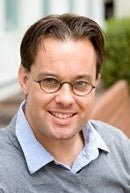July 19, 2012 — Two special supplements published to mark AIDS 2012 conference
Seven Essential Steps Toward an AIDS-Free Generation
Frontline public health experts ask: Will society pay the price to turn a dream into reality?
The end of AIDS is within our reach. But as the authors of a new special supplement in the August, 2012 issue of the Journal of Acquired Immune Deficiencies (JAIDS) point out, new financial investments – and renewed commitments – from countries around the world will be critical to fully implement proven treatment and prevention tools already at hand and to continue essential scientific research.
“Only then will an AIDS-free generation be possible,” write the supplement’s editors – Richard G. Marlink, Wafaa El-Sadr, Mariangela Simao and Elly Katabira – in their introduction. “Are we willing to pay the price to turn the dream into a reality?” they ask.
The supplement may be reviewed online at http://journals.lww.com/jaids/toc/2012/08012.
Click here to listen to a July 19, 2012, BBC interview with Richard Marlink on current AIDS issues.
Co-authors of the special supplement include Richard Marlink, Beal Professor of the Practice of Public Health at Harvard School of Public Health (HSPH), executive director of the HSPH AIDS Initiative, and Elizabeth Glaser Pediatric AIDS Foundation; Wafaa El-Sadr, Mailman School of Public Health and College of Physicians and Surgeons, Columbia University, International Center for AIDS Care and Treatment (ICAP) and Harlem Hospital Center; Mariangela Simao, Rights, Gender and Community Mobilization Department, UNAIDS Secretariat; and Elly Katabira, International AIDS Society, and Makerere University College of Health Sciences, Kampala, Uganda.
Recommendations Stem from AIDS@30 Conference
The recommendations are an outgrowth of the international AIDS conference – AIDS@30 — convened at HSPH in December, 2011. The conference brought together several hundred global experts from academia, government, non-governmental organizations, and the private sector. The conference was held in anticipation of the XIX International AIDS Conference (AIDS 2012), set for July 22-27, 2012 in Washington D.C. Marlink and other HSPH faculty will join some 25,000 AIDS experts, activists, global and community leaders, and people living with HIV at the upcoming meeting to evaluate scientific progress in combatting AIDS and to chart a course forward.
The supplement identifies seven key areas where funding and political will must be focused to end AIDS. These include:
- The promise and challenges of using antiretroviral drugs to prevent HIV transmission
- New AIDS treatments, improving the antiretroviral pipeline to treat those infected, and working toward a cure
- Enhancing the role of government leaders, the private sector, and non-governmental organizations in driving local and national responses to the epidemic
- Narrowing health disparities in preventing and treating AIDS caused by economic disempowerment, discrimination, and stigma
- Preventing AIDS transmission from mothers to babies in low- and middle-income countries where access to prevention services are most limited, but where new drug interventions show AIDS could be virtually eliminated in infants and children
- Funding the pursuit for AIDS vaccines, which are necessary to actually eliminate the disease
- Maximizing and growing current investments in the global AIDS response, rather than decreasing funding. In addition to its humanitarian impact, money spent going forward is a good global and local investment because improving and sustaining people’s health enables them to be productive members of society contributing to the growth of their nations’ economies.
Preparing for Challenges Ahead: HIV and Aging
Special issue of journal AIDS published to mark international conference

By 2015, it is estimated that half the U.S. population living with HIV will be over age 50. As antiretroviral therapy expands worldwide, this aging of the HIV epidemic will be mirrored in developing countries, including sub-Saharan Africa, according to [[Till Bärnighausen]], associate professor of global health at HSPH, and one of four guest editors of a special supplement of the journal AIDS, published by the International AIDS Society for the XIX International AIDS Conference (AIDS 2012), July 22-27, 2012 in Washington D.C.
In an editorial, Bärnighausen and colleagues write that the increased life expectancy of HIV-infected persons will lead to increases in HIV prevalence among older adults. “Yet the world is unprepared to deal with an aging population with HIV,” they write. Much remains to be learned about what determines the success of antiretroviral treatment in older age groups and about future needs regarding treatment for chronic noncommunicable diseases, such as cardiovascular disease and diabetes, in older, HIV-infected adults in developing countries, say the authors. The global response to HIV to date has focused on treating mothers, children, and the most severely immuno-compromised patients.
Bärnighausen is senior author of a paper in the supplement that quantifies the aging of HIV-infected people in sub-Saharan Africa. Using a statistical model, the researchers used publically available data to predict future trends in HIV prevalence.
“We show that, if treatment coverage continues to increase at present rates, the total number of HIV-infected people aged 50 years or older will nearly triple over the coming years: from 3.1 million in 2011 to 9.1 million in 2040, dramatically changing the age composition of the HIV epidemic in Sub-Sahara Africa. In 2011, about one in seven HIV-infected people was aged 50 years or older; in 2040, this ratio will be larger than one in four,” Bärnighausen and colleagues write. “Health policymakers need to anticipate the impact of the changing HIV age composition in their planning for future capacity in these systems.”
–Marge Dwyer
